Student Blog
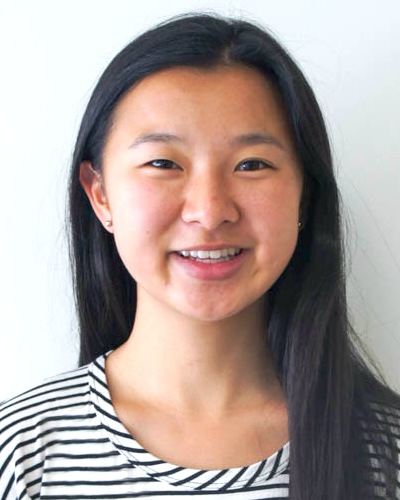
Some Things Never Change ⟩
May 30, 2020, by Bethany
I began my journey at USC four years ago as a wide-eyed freshman in the Bachelor’s-to-Master’s Occupational Therapy program. I had no idea back then what a difference the next few years would make. The first life-changing decision I made took place even before Welcome Week started: I started Band Camp with the Trojan Marching Band. I fell in love with the passion students carry for their school. As classes began, I found that I had my own passion in OT, one that not as many people understood. So I quickly learned to share my story of finding what is, in my opinion, the perfect way to channel creativity to help others.
I learned to support the spirit of the university and to advocate for occupational therapy, and I decided that I wanted to do both of these more vocally. My sophomore year, I became a Student Ambassador and Tour Guide in the Admission Center, doing my best to encapsulate my entire USC experience in 90 minute tours. I also spent a summer as a Student Ambassador for the Chan Division.
Then came a unique transition. As a Bachelor’s-to-Master’s student, I spent my senior year in the first year of the Master’s program. Through the challenge of finding balance between finding closure and starting anew, I realized that my desire to help others better understand what OT and USC would look like for them had not changed. So here I am. Back again as a Student Ambassador for the Chan Division of Occupational Science and Occupational Therapy. And I couldn’t be more excited to share my experience with all of you!
⋯
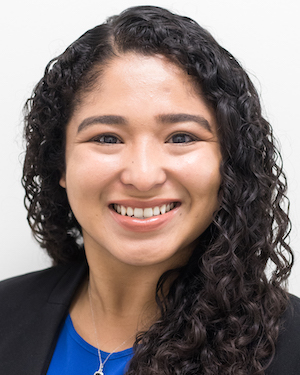
Looking Beyond ⟩
May 13, 2020, by Marilyn
On April 22nd, I woke up feeling the usual stress of a graduate student during the “Stay at Home order.” My dad greeted me with a small envelope, which left me perplexed and confused. This envelope was addressed to me in my handwriting. What could this be? I opened the envelope and revealed a handwritten letter that I wrote to myself in Fall 2018 on 11/26/18 in the OT 511 Therapeutic Use of Self Course. It was 1st year OT Grad student Marilyn. You see, Dr. Kristin Nxumalo instructed the class to write a letter to ourselves that would be mailed to us closer to graduation day.
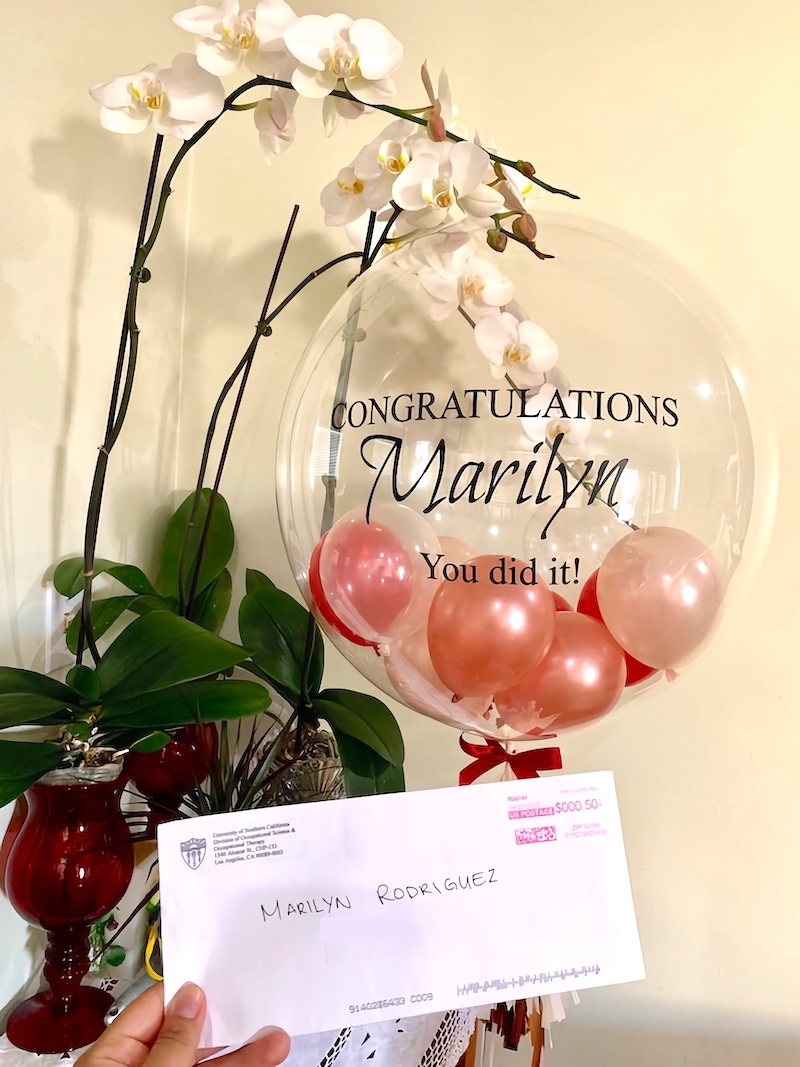
The infamous envelope!
Upon opening the letter, I did not know what to expect, but the first line stated, “You made it to graduation day!” I immediately had a flashback of sitting next to my peers in class as we engaged in this activity. I had no idea of the power of my words until I read the letter. It gave me hope and strength to carry on studying for the comprehensive exam that I took this morning.
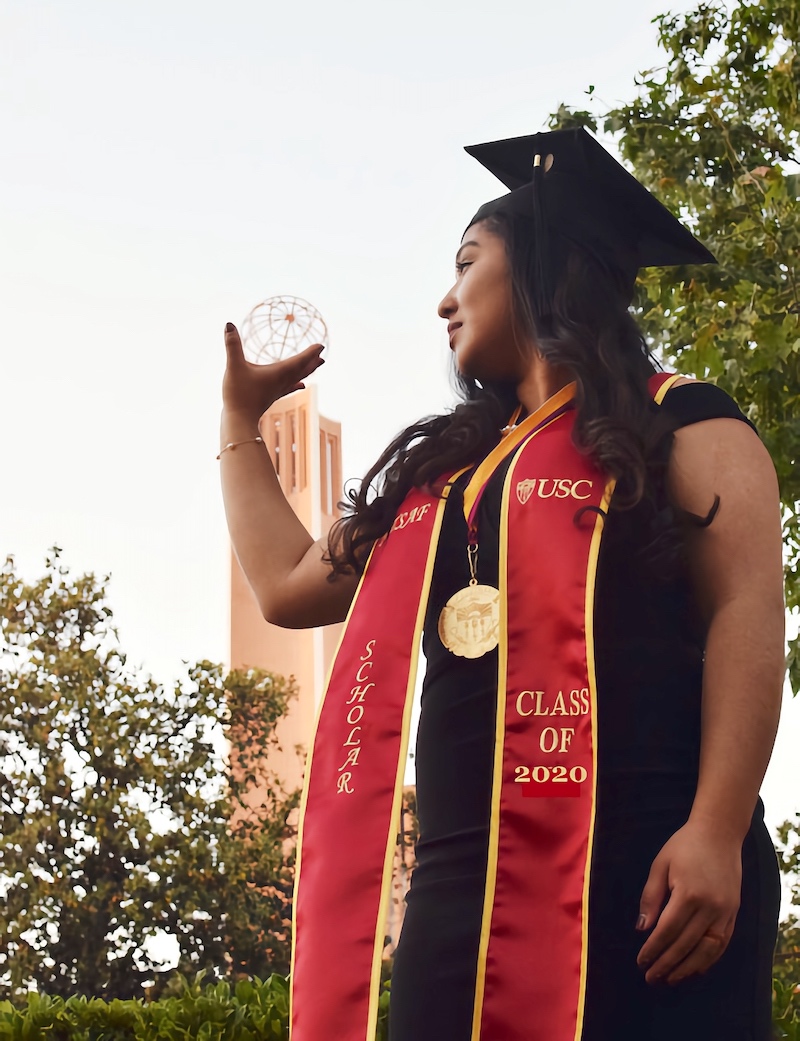
Class of 2020 — we made it!
In my letter, I wrote “I pray that you are feeling peace at this moment knowing that you’ve made it this far! There is nothing that you cannot do, nothing that you cannot conquer because God makes the impossible possible. I’m not sure what you have lost within these past two years as you’ve sacrificed plenty to get to this point but remain present in the moment. Celebrate this milestone with your loved ones because you deserve it. Moving forward remember to find balance in your personal and professional life. Do not compromise your character currency for no one or nothing. Speak honestly, think with sincerity, and act with integrity. Now give your parents a big hug and tell them congrats! Your successes are not your own. Remember the village that helped you make it this far because they continue to spur you towards your goals” . . . Live out your God given purpose!
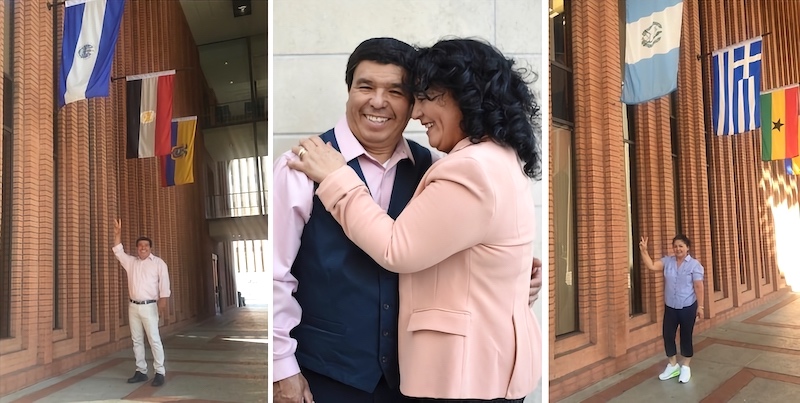
Thank you Dad and Mom for making the decision to chase the American dream, in order for your children to pursue higher education. I love you both and I am proud to be Salvadoran and Guatemalan!

To my siblings — thank you for believing in me and reminding me that pursuing higher education is not a depreciating asset.

Thank you to my phenomenal village for spurring me on and reminding me that we rise by lifting others.
As I re-read this letter at the end of taking the comprehensive exam this morning, I immediately asked my husband and parents for a giant hug. There were many times throughout my master’s educational journey that I allowed fear, failure, hopelessness, or unmet expectations to become my primary focus. However, I have been reminded by my loved ones and mentors to redirect my focus right back where it belongs — on my faith and passion for being of service to others.
Moving forward letter writing will be an activity that I will continue to practice. I will continue to act on my plans and visions but will remain open to new opportunities. I will trust in my abilities and make sure to increase access and decrease barriers for marginalized communities. I will move on to complete my summer level 2 fieldwork at the USC Occupational Faculty Practice under the supervision of Dr. Ashley Halle. Lastly, but certainly not least, I will become Dr. Thompson as I will pursue my doctoral degree and complete my clinical residency in a primary care setting at Kaiser Permanente.
Thanks for reading my blogs this past year and I hope I have the opportunity to interact with you in the near future!

To the 2019-2020 Ambassador team thank you for inspiring me to be innovative and reminding that there is no I in team!
⋯

The Trouble with Hello is Goodbye ⟩
May 13, 2020, by Japeth
I have spent so much time just thinking about how to start this blog post. I do not exactly know what to say, where to begin, or how to turn my thoughts into words . . .
My experience at USC Chan has been amazing. It was a joy meeting new OT friends, learning from world-renowned researchers and experienced faculty, and awesome staff! Coming to USC I brought so many practical questions with me, as well as goals and target learning outcomes; and honestly, transitioning from being a practitioner to becoming a student again was quite a bit of an adjustment to me. But I thank the entire Chan community for creating a place where openness, passion, and compassion are intertwined; USC Chan felt like home to me and it will always be home to me.
To my favorite cohort — you all will always have a special place in my heart. Thank you for a fun year!! I enjoyed every moment with you guys, from attending classes to having random korean bbq dinners! Some of your homes became our homes too (shoutout to Raffy and Lin!!!!) and I will surely miss trying out different food that you guys bring to class! Also, thanks to Dr. Ochi for leading the cohort and for guiding us since day 1!!

These photos were taken during the orientation, White Coat ceremony, and when we went to Dr. Ochi’s house for the Welcome BBQ Dinner. Time flies so fast when you’re enjoying!

I will miss walking around the campus with you guys! And if there’s one thing that could bind us all together, that is definitely food! (The photo on the top right was taken at Lin’s house when we went there to eat Taiwanese food that they cooked for us. Photo on the bottom left was taken when we went to Koreatown to eat seafood. Photo on the bottom right was when we tried Arabic food.)
To the amazing GI team — I have featured you in my previous blog posts and now I am featuring you again, and even if I were to write more blogs, I will never get tired of featuring you guys (cheesy I know LOL). It was a pleasure working with you all!! Your projects for Chan and for the international community are amazing.
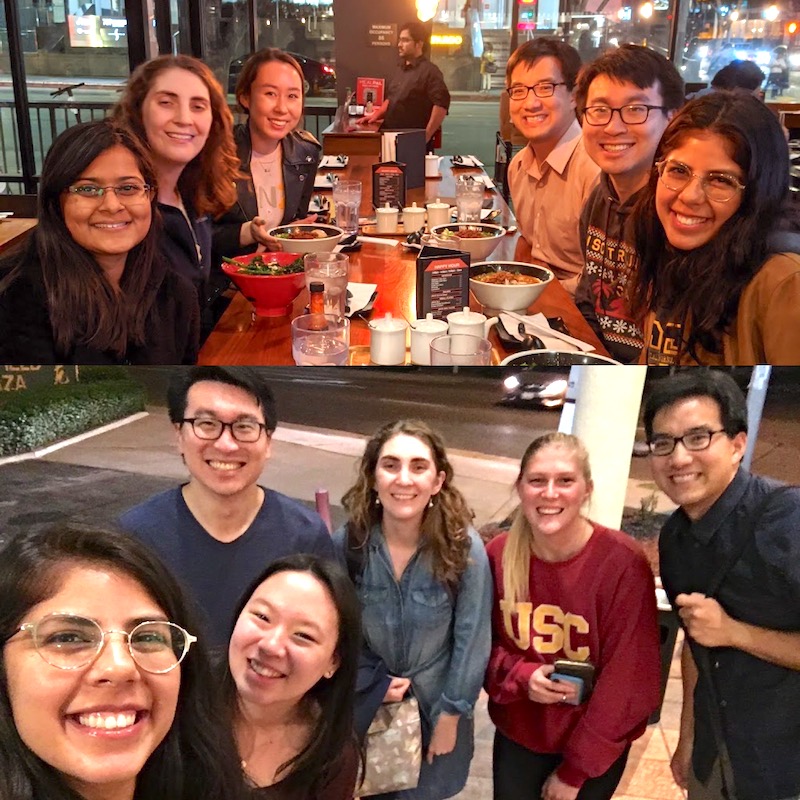
No words can express how grateful I am to have worked with these amazing people! Here’s to more projects that aim to advance Occupational Therapy locally and internationally!!
To the best SA team — It was fun working with you in and outside of the office! Office hours did not feel long when we were at the office because you guys have so much to share and to talk about. To our boss, Kim, thank you for the opportunities you have given us! I will miss you, team!

Student Ambassadors with Kim (Marketing head a.k.a big boss), Bianca (Events Coordinator), and Maggie (Events team member).
To these fellow Trojans who made sure that I am well and safe when I first got here — thank you so much for checking in always! I remember your overflowing support when I first applied to USC and I felt your excitement when my dream finally turned into a reality. I am lucky to have you guys.

On my left is Apple and on my right is Arielle; I met both of them during the WFOT Congress in South Africa and we became good friends. On the right most is Berry, who was one of my mentors back in undergrad in the Philippines and now my fellow Trojan!
To the Trojan friends I met outside of Chan Division — you guys made my year extra wonderful! I enjoyed every trip we did and every food we tried. I am proud to have friends like you who will surely become great researchers and health professionals!
To my friends from the MA2 program (especially Maggie, Calvin, and John Jae), and the OTD program (Michael, Emma, and Valentina) — You guys are awesome! Thanks for being an external source of happiness! I wish you good luck on your studies and professional careers!
USC Chan is a community where growth is fostered and a place where your potential is discovered. I am happy to be part of this community, now and forever. To everyone I met here, I will never regret exchanging our first hellos that led us to becoming lifelong friends. We may say goodbye for now, but I know we all can’t wait to say our next hellos.
I want to greet you all with “Mabuhay!”, a Filipino term that means “long live”. Mabuhay ka, USC (Long live, USC!) and Fight On, Trojans!
⋯
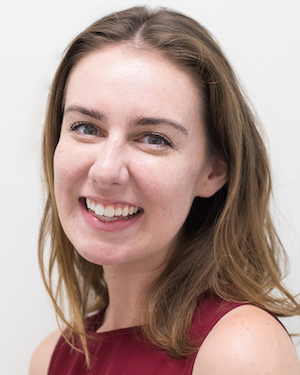
Rocky Starts ⟩
May 6, 2020, by Noelle
I recently revisited my journal because as I approach graduation and the beginning of a new chapter, I wanted to remind myself where I was when I started this one.
I did not start grad school the way I wanted to. I was recovering from a difficult breakup, I wasn’t living with my long-term roommate anymore, my relationship with my parents was strained, and I just didn’t feel like I had the right energy going into the year. On top of that, I was entering a class of people that had bonded over the summer and it was intimidating, even for an extrovert like me. I have always prided myself on my resilience and adaptability, but it took me longer than I expected to adjust to all of the changes, and I wasn’t happy.
And then at some point, I had enough. I realized I was putting way too much pressure on myself to have the perfect year and the resulting disappointment was a weight that was preventing me from fully enjoying the things that were going right. So I let go. I let go of the year I wanted and accepted the year I was having. And while that didn’t change things over night, it was liberating.
This is not to say that I threw in the towel and gave up on having a good year. Quite the opposite. By letting go of what I thought I wanted and needed, I was free to define my path as I walked it—to pursue unexpected opportunities, take risks, and better recover from setbacks. I’m not going to lie, not having a definite destination was scary at times. But I look at where my path has led me and it’s nothing I could have planned for or expected. And it’s wonderful.
Looking ahead, I’m still not certain of the destination I am heading towards. And for me that’s still a little scary, but also exciting. These past two years have taught me that it’s ok not to have a perfect plan and stick to it. There will be rocky starts and disappointments. But if the past is any indicator of the future, there will also be many happy accidents, surprising victories, and unanticipated joy just around the corner.
So after endlessly scrolling through my playlists, I think I found the perfect song for this entry and for my final song recommendation. “Sisyphus” by Andrew Bird. Enjoy!
⋯

Courses at Chan: What Makes Each Trojan OT Unique ⟩
May 5, 2020, by Japeth
One thing I really love about the Post-Professional Master of Arts in OT program at USC Chan is the liberty that we have as students to learn what we are really interested in. The program takes a year to complete and consists of two semesters: the Fall semester includes the core courses (these are the courses that you take together with the entire cohort) and the Spring semester includes two core courses and elective courses (these courses are specialty courses and students take what they are passionate about).
This spring semester, I decided to take the following courses: OT 560 Contemporary Issues in School-Based Practice, OT 583 Lifestyle Redesign, OT 565 Sensory Integration Interventions, and OT 568 Sensory Processing and Sensory Integration: Special Topics.
OT 565 and OT 568: I want to take this chance to say thank you to Dr. Janet Gunter and Dr. Joan Surfus for being amazing! The Sensory Integration Theory is not an easy theory to learn, and it even gets more difficult when you start learning how to use it during assessment and intervention, but these two professors made sure that we learn every concept and encouraged us to ask questions when we were quite confused. They give us coursework that are practical and useful and are very helpful in making us integrate theory into practice.
OT 560: Dr. Linsey Smith is a great teacher for me. Each module was equipped with up to date information about OT in the school setting, evidence-based interventions, and standardized assessments! I love how the course is properly organized according to the grade level from Early Intervention to High School transition, and it also included contents about interprofessional collaboration, professionalism management, and advocacy!
OT 583: Another “only at USC” course and also one of the best at Chan is the Lifestyle Redesign® elective. This course taught me how to manage myself as a person and as an OT, how to manage individual and group sessions that are very client-centered, and how to establish routines and habits through behavior change. This course is very empowering, and I appreciate how Dr. Camille Dieterle allows us to do return demonstrations during class.
(Disclaimer: You can take 10-12 units of elective courses, and mine is more than that because as a student, we are also allowed to overload.)
And finally, I am sharing this video project that USC Chan’s Post-Professional Master’s in OT 2020 created! We hope that this will be a useful resource to future students!
⋯





